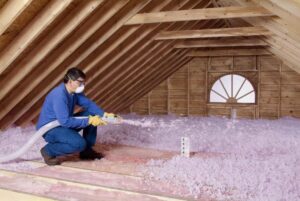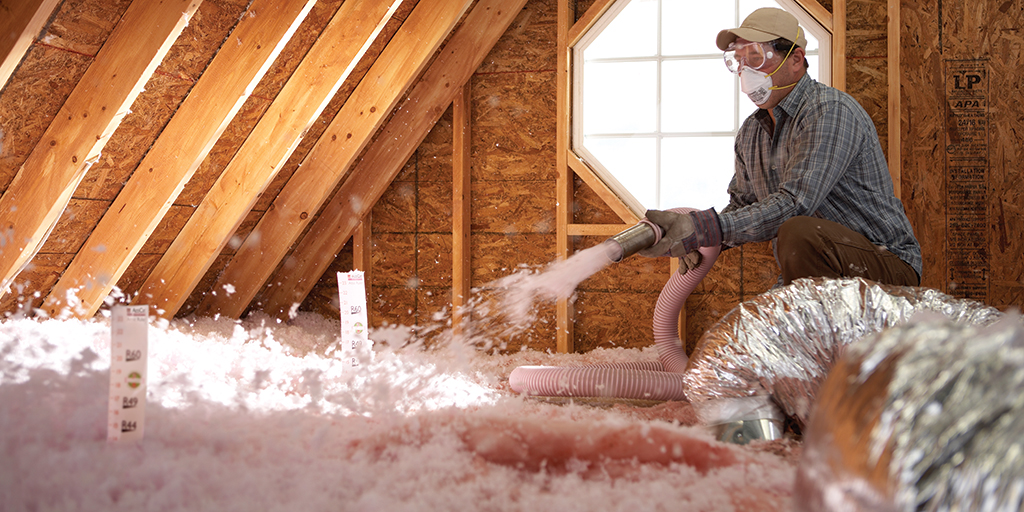Blown-in fiberglass insulation is a versatile and efficient solution for enhancing thermal performance in both residential and commercial buildings. Its ability to fill cavities uniformly and adapt to irregular spaces provides superior energy efficiency and comfort. This guide explores installation methods, material considerations, performance factors, and inspection practices to ensure optimal outcomes.
How Blown-In Fiberglass Insulation Enhances Energy Efficiency
Blown-in fiberglass insulation installation enhances thermal performance by minimizing heat transfer through ceilings, walls, and floors. Its loose-fill properties allow the material to settle densely within cavities, effectively reducing gaps and voids that are common with traditional batt insulation.
Uniform Coverage
The blown-in method allows insulation to conform to irregular spaces, such as joists, rafters, and wall studs, ensuring continuous thermal protection. Properly installed, it prevents air leakage and thermal bridging.
Improved R-Values
Dense packing achieves higher R-values per inch than standard batt insulation. This improves energy efficiency by reducing heating and cooling demands and stabilizing indoor temperatures.
Noise Reduction
The dense fill of blown-in fiberglass absorbs sound, reducing noise transfer between rooms and floors, which can be an important benefit in commercial and multi-family properties.
Material Selection and Preparation
Selecting the right type and density of fiberglass is crucial for performance and longevity.
Fiberglass Types
Standard loose-fill fiberglass is suitable for general applications, while high-density fiberglass or “dense-pack” products offer superior thermal and acoustic performance. The chosen product should meet ASTM and UL standards for fire safety and thermal resistance.
Moisture Management
Prior to installation, all cavities should be dry. Moisture can reduce thermal efficiency and promote mold growth. Vapor barriers and proper ventilation complement the insulation to maintain long-term performance.
Equipment and Handling
Installation requires a blowing machine capable of delivering consistent material density. Proper calibration ensures uniform fill, while protective gear prevents skin and respiratory irritation from fiberglass particles.
Step-by-Step Installation Process
Proper installation ensures energy efficiency, fire safety, and long-term performance.
Step 1: Site Preparation
Clear debris and check for obstructions in attic or wall cavities. Seal existing air leaks around penetrations, ducts, and wiring to optimize insulation performance.
Step 2: Machine Setup
Calibrate the blowing machine for the selected fiberglass type. Consistent feed rates and nozzle pressure are essential for even distribution.
Step 3: Application Technique
Apply insulation evenly, filling cavities completely without overpacking, which can damage the structure or reduce air permeability. Maintain proper depth to achieve the desired R-value.
Step 4: Inspection and Adjustment
Visual inspection confirms uniform coverage and depth. Adjust machine settings or reapply insulation in low-density areas to ensure consistent thermal protection.
Comparing Blown-In Fiberglass to Other Insulation Types
| Insulation Type | R-Value per Inch | Air Sealing | Installation Complexity | Best Use Cases |
|---|---|---|---|---|
| Blown-In Fiberglass | 2.2–2.7 | Moderate | Moderate | Attics, wall cavities, irregular spaces |
| Batt Fiberglass | 2.9–3.8 | Low | Easy | Standard wall cavities, floors |
| Spray Foam (Open-Cell) | 3.5–3.8 | Good | Moderate | Walls, ceilings, air sealing needed |
| Spray Foam (Closed-Cell) | 6–7 | Excellent | Moderate | High-performance insulation, air/moisture barrier |
This table highlights performance trade-offs and helps guide material selection for specific applications.
Common Questions About Blown-In Fiberglass Installation
How do dense-pack and standard loose-fill differ?
Dense-pack fiberglass is installed at higher density, reducing settling and air gaps while improving thermal and acoustic performance.
Can blown-in fiberglass be added to existing insulation?
Yes. It is often used to retrofit attics or walls, filling voids and increasing overall R-value without major structural modifications.
What precautions prevent moisture damage?
Ensure cavities are dry before installation, use vapor barriers when necessary, and maintain attic or wall ventilation to prevent condensation.
How is consistent coverage verified?
Depth markers, visual inspection, and occasional infrared imaging confirm uniform installation and full cavity fill.
Are there fire safety considerations?
Fiberglass is non-combustible, but proper clearance around heat sources and compliance with local building codes is required for all installations.
Conclusion
Blown-in fiberglass insulation provides a flexible, efficient, and cost-effective solution for improving thermal performance and comfort in residential and commercial buildings. Its ability to fill cavities uniformly, adapt to irregular structures, and reduce heat loss makes it a preferred choice for retrofits and new construction alike.
Proper material selection, precise machine calibration, and careful installation are essential for achieving consistent R-values and long-term performance. Regular inspection and strict quality control further ensure energy efficiency, moisture management, and fire safety, resulting in reliable insulation services across a wide range of applications.
FAQs
What is the main advantage of dense-pack fiberglass?
Dense-pack fiberglass reduces settling, improves thermal performance, and minimizes air gaps in attics and walls compared to standard loose-fill insulation.
Can blown-in fiberglass be used in walls as well as attics?
Yes. It is suitable for wall cavities, ceilings, and floors, especially in retrofit projects or areas with irregular framing.
Does blown-in fiberglass require special safety precautions?
Installers should wear protective clothing, gloves, goggles, and masks to prevent skin and respiratory irritation during installation.
How is the correct R-value achieved?
Depth and density of insulation are key. Proper calibration of the blowing machine ensures consistent fill and achieves the targeted R-value.
Can blown-in fiberglass improve soundproofing?
Yes. Dense fill absorbs sound and reduces noise transfer between floors and walls, benefiting multi-family and commercial properties.
Author: With 15 years of banking experience and five years managing H&R Foam Insulation, Edith is passionate about building strong relationships with customers. Her favorite part of the role is connecting with clients and ensuring their needs are met as she works alongside them to improve the health, comfort, and energy efficiency of their homes.
Reviewer: With 7 years in the spray foam insulation business, Ella Adams offered useful feedback on this post, helping make sure the tips were both realistic and easy to apply.

